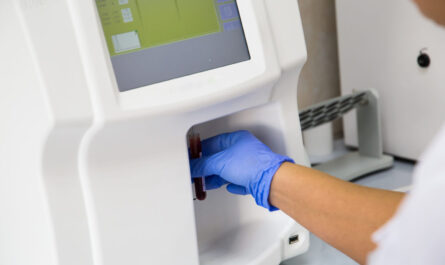
Polycystic ovary syndrome (PCOS) is a hormonal disorder common among women of reproductive age. It is one of the most common causes of female infertility. A woman can be diagnosed with PCOS if she experiences at least two of the following three key symptoms – irregular periods, excess androgen levels or polycystic ovaries on ultrasound. PCOS diagnosis involves examining these symptoms and signs thoroughly through medical history, physical examination and diagnostic tests.
Medical history and physical examination
The diagnostic process begins with a thorough medical history and physical examination by a gynecologist. The doctor will go through the patient’s menstrual cycle history and inquire about any signs of excess hair growth or acne. This helps identify PCOS related symptoms experienced by the patient. Physical examination focuses on checking weight, blood pressure and looking for signs of excess hair growth.
Ultrasound
Transvaginal ultrasound of the ovaries is an important diagnostic tool used to check for the trademark polycystic appearance of ovaries in PCOS. During ultrasound, multiple small follicles or cysts scattered on the outer edges of the ovaries can be seen. This presentation is called a “string of pearls” appearance which is characteristic of PCOS. The antral follicle count from the ultrasound is also looked at by the doctor. A count of 12 or more follicles suggests PCOS.
Blood tests
Several blood tests help check hormonal imbalances associated with PCOS. One of the most important tests is checking levels of androgens like testosterone in females. Elevated androgen or hyperandrogenemia indicates PCOS. Fasting blood sugar levels are also checked since insulin resistance and diabetes commonly occur in PCOS patients. Thyroid function tests are performed to exclude thyroid issues mimicking PCOS.
Other diagnostic considerations
For most cases, the above evaluation is sufficient for a PCOS diagnosis. But in ambiguous cases, the doctor may order additional tests. A high resolution transabdominal MRI can detect polycystic ovaries along with any other pelvic pathology. Fasting insulin levels are also sometimes checked to gauge the degree of insulin resistance. A cardiac risk profile including lipid levels may be assessed.
Making the diagnosis
After gathering all the required diagnostic findings, the gynecologist correlates the clinical features, symptoms and test results to make or rule out a diagnosis of PCOS. The doctor applies the diagnostic criteria set by international organizations like Rotterdam ESHRE/ASRMS criteria to make a conclusive diagnosis. PCOS is diagnosed when at least two of the three salient features of PCOS are clinically present and other related conditions are excluded.
Importance of early diagnosis
Early and accurate diagnosis of PCOS is very important for effective long term management of the condition. It enables prompt treatment of PCOS symptoms and reduces complications. Early diagnosis and lifestyle management can prevent worsening of insulin resistance, obesity and cardiovascular risks in later life. It can also help address infertility issues at an earlier stage through medical therapy or assisted reproduction techniques. Counseling regarding the chronic nature of PCOS is also important for patients.
Making sense of diagnostic complexities
While PCOS has characteristic features, its diagnosis may sometimes pose challenges due to overlapping symptoms with other conditions and differences in presentation among patients. It also needs to be differentiated from non-classic forms of PCOS which have fewer diagnostic criteria fulfilled.
In such ambiguous cases, diagnosticians have to carefully analyze each element of history, examinations and assays to reach a well-reasoned judgment about the likelihood of PCOS. Borderline androgen levels or irregular periods alone may not clinch the diagnosis and has to be correlated with other aspects thoroughly.
It is not uncommon for PCOS patients to remain undiagnosed for long periods due to inconsistencies. A high index of suspicion and repeat evaluations are sometimes required in such cases. Specialist referral is prompted if needed to resolve diagnostic dilemmas using additional testing and multidisciplinary inputs. Thyroid, adrenal or other endocrine diseases need proper exclusion as well before confirming PCOS diagnosis.
Making the right diagnosis has quality of life and health implications for patients. It reassures them about the real nature of their problem while avoiding unnecessary medicalization. A definitive diagnostic conclusion enables streamlined long term management customized to the patient’s needs.
Learning from diagnostic experiences
Complex diagnostic scenarios help physicians and researchers gain valuable insights into PCOS and sharpen their clinical skills over time. Lessons learnt from misdiagnosed, late diagnosed or challenging cases are helping enhance standards of PCOS evaluation and management.
Studies reporting diagnostic delays or initial misdiagnosis as other conditions point to a need for more clinician awareness about the protean nature of PCOS presentations. Educating medical students and practitioners about considerations which can aid early recognition is important.
Sharing insights from outliers also improves understanding of less common or atypical forms of PCOS which lie on diagnostic borderlands. It prompts review of existing diagnosis criteria to ensure even rarer variants are captured.
Well documented case evaluations bringing out diagnostic conundrums help refine testing strategies and development of newer assays. They stimulate ideas around emerging biomarkers with potential to settle ambiguous cases.
Disseminating learning on complex cases boosts collaborative research efforts as well. It prompts formation of expert panels to evolve consensus-based guidance addressing grey areas in PCOS diagnosis. Such initiatives aim to minimize inter-observer variations and promote standardized, evidence-based practices.
Conclusion
In summary, diagnosing PCOS requires a judicious approach factoring in both classical and non-classical features seen in individual patients. Careful medical history taking, physical examination and selective use of investigational tools help arrive at a well-reasoned conclusion. Lessons from diagnostic difficulties aid development of enhanced strategies for accurate PCOS identification and management over the long term.
*Note:
1. Source: Coherent Market Insights, Public sources, Desk research
2. We have leveraged AI tools to mine information and compile it



